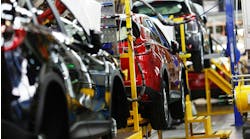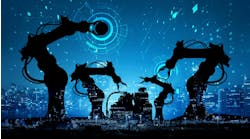Talk about commitment.
SAS recently announced a $1 billion investment in artificial intelligence over the next three years, focused on software innovation, education initiatives and expert services.
The funds are earmarked for three main areas:
- R&D innovation where SAS plans to build on its global AI efforts
- Expert services to optimize customer return on AI projects
- Education initiatives addressing customer needs to better understand and benefit from AI
We chatted with Marcia Walker, principal consultant for the manufacturing practice at SAS, to learn more about the educational/training facets of this project, particularly the AI Accelerator Program that is intended to put these grand ideas into play. Take a look…
Smart Industry: Is education about emerging technologies like AI often overlooked?
Marcia: It does get overlooked. This is another passion of mine; one of my degrees is in education. There are a host of skills related to AI—business skills, leadership skills, how to explain AI. These things are necessary for anyone involved in an AI initiative. Everyone needs to play educator and everyone needs to be curious about the ramifications of AI. We’re in the phase of living the questions about AI. What does it mean for me? For my organization? What kind of cultural changes will take place?
Smart Industry: How does SAS’ AI Accelerator Program speed the adoption of AI?
Marcia: AI augments the human intelligence. We are investing human assets. This is an investment in education and training, along with an investment in technology and an investment in the infrastructure that goes with the technology. All of those pieces are in place. You can have really fancy technology and if you don’t have the people to execute it it’s not going to work.
Smart Industry: In what fields is this most applicable?
Marcia: I happened to be in the industry most touched—manufacturing. There are lots of great applications on the plant floor and regarding supply chain optimization. Consider a mid-market customer using text analytics on call-center data. Based on the data they get from the text of transcripts, they are able to tie into quality problems in the factory. Something is tuned wrong, for example, and though the products are meeting quality measures, the service people are still capturing notes in a written form.
Smart Industry: Is the wide breadth of potential users important for full adoption of AI?
Marcia: We don’t presuppose that global adoption is the goal. For global adoption you need to understand technology and how all this works—most don’t need to understand the depths of it. They want the user experience—“You solved a problem for me.” In manufacturing, engineers are going to have to trust the output of an algorithm. The average healthcare worker is going to have to trust that image-recognition is more reliable than her own eyes. That’s when we’ll get really broad adoption.
Smart Industry: Let’s play devil’s advocate…will AI replace the human touch?
Marcia: Absolutely not. One of the things I love about AI is that it allows us to look at what it means to be human; what differentiates us from machines. Humans are programming these machines. Our humanity is embedded in them. Humans are not here to do things that machines can do, but rather do things machines can’t.
Smart Industry: What is an element of these AI initiatives that most excites you?
Marcia: I am really excited about image recognition—there are so many unique things being done there. There is a wild use case with tiger paw prints being used to track movements of the animals. The advantage is allowing you to track the animals without radio collars, providing better info with a better quality of life. If we can do that for a paw print in the middle of the desert, imagine what we could do with a semiconductor manufacturer or helping people with disabilities.


